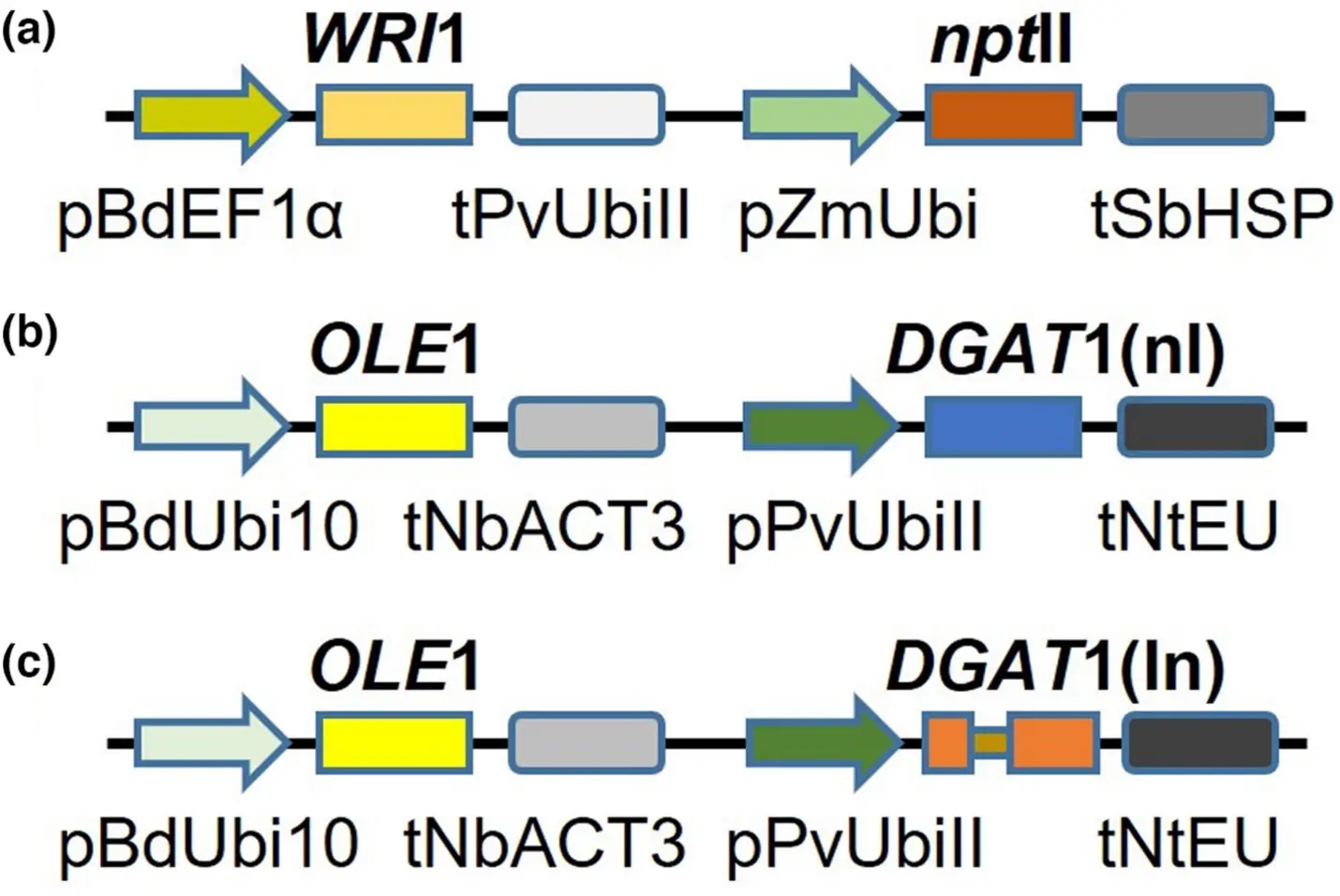Triacylglycerol, Total Fatty Acid, and Biomass Accumulation of Metabolically Engineered Energycane Grown Under Field Conditions Confirms its Potential as Feedstock for Drop-in Fuel Production
Themes: Conversion, Feedstock Production
Keywords: Biomass Analytics, Lipidomics, Metabolomics
Citation
Cao, V.D., Kannan, B., Luo, G., Liu, H., Shanklin, J., Altpeter, F. Oct 30, 2023. Data from: “Triacylglycerol, Total Fatty Acid, and Biomass Accumulation of Metabolically Engineered Energycane Grown under Field Conditions Confirms its Potential as Feedstock for Drop-in Fuel Production.” Zenodo Repository. DOI: 10.5281/zenodo.8435160.
Overview

Metabolic engineering for hyperaccumulation of lipids in vegetative tissues of high biomass crops promises a step change in oil yields for the production of advanced biofuels. Energycane is the ideal feedstock for this approach due to its exceptional biomass production and persistence under marginal conditions. Here, we evaluated metabolically engineered energycane with constitutive expression of the lipogenic factors WRINKLED1 (WRI1), DIACYLGLYCEROL ACYLTRANSFERASE1 (DGAT1), and OLEOSIN1 (OLE1) for the accumulation of triacylglycerol (TAG), total fatty acid (TFA), and biomass under field conditions at the University of Florida-IFAS experiment station near Citra, Florida. TAG and TFA accumulation were highest in leaves (up to 9.9% and 12.9% of DW, respectively), followed by juice from crushed stems, stems, and roots. TAG and TFA accumulation increased up to harvest time and correlated highest with OLE1 and DGAT1 expression. Biomass dry weight, TAG, and TFA content differed greatly depending on DGAT1 and OLE1 expression in transgenic lines with similar WRI1 expression. Biomass did not significantly differ between WT and line L2 with DAGT1 and OLE1 expressed at low levels and TAG and TFA accumulating to 12- and 1.6-fold that of WT leaves, respectively. In contrast, line L13, with intron-mediated enhancement of DGAT1 expression, displayed a 245- to 330-fold increase in TAG and a 4.75- to 6.45-fold increase in TFA content compared with WT leaves and a biomass reduction of 52%. These results provide the basis for developing novel feedstocks for expanding plant lipid production and point to new prospects for advanced biofuels.